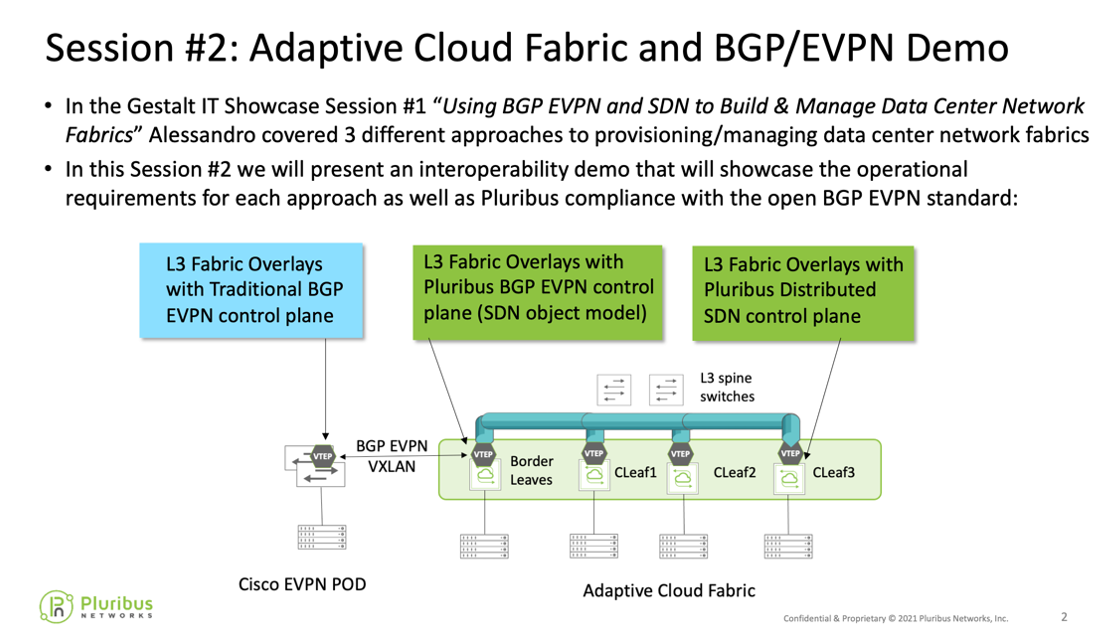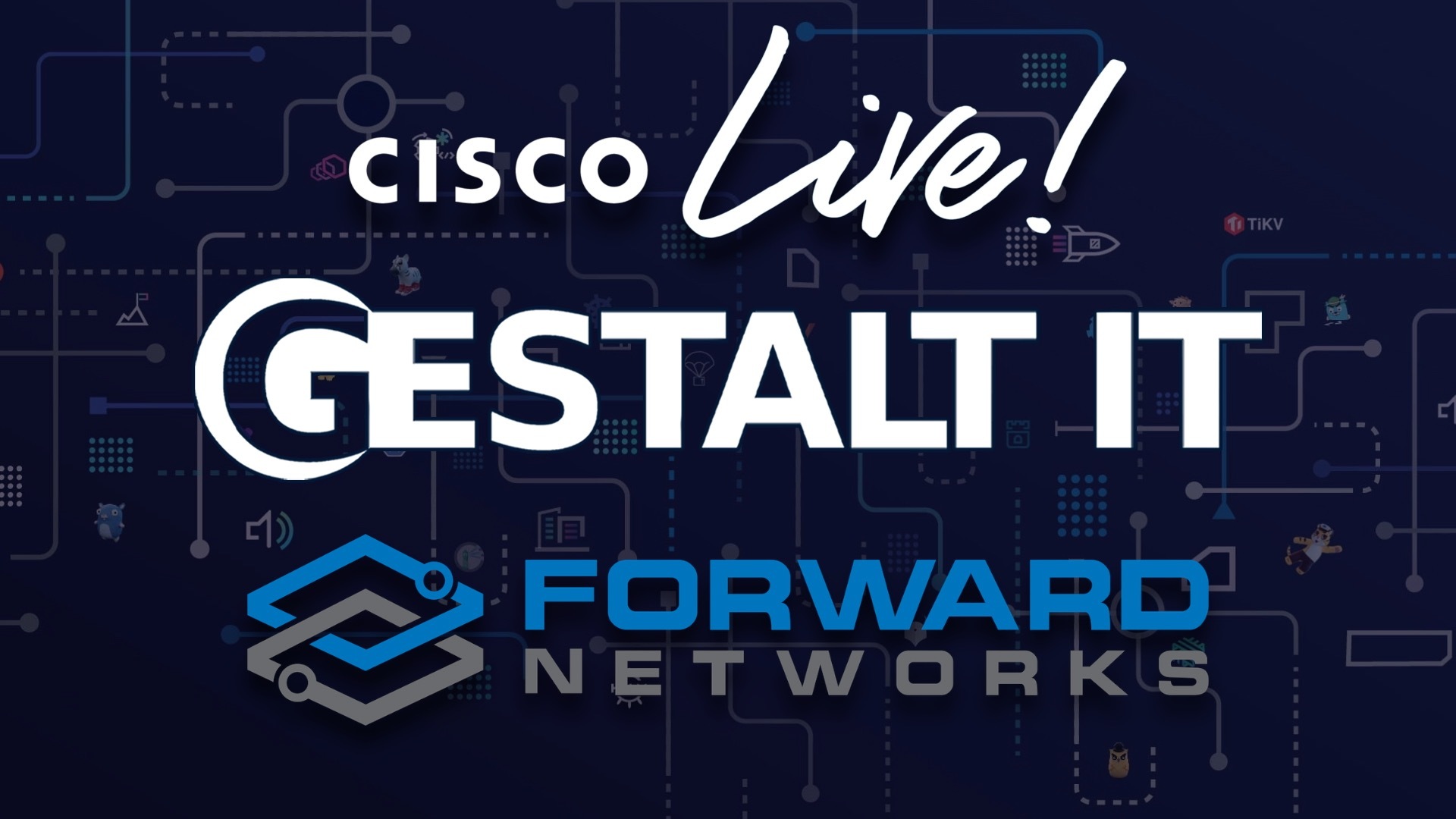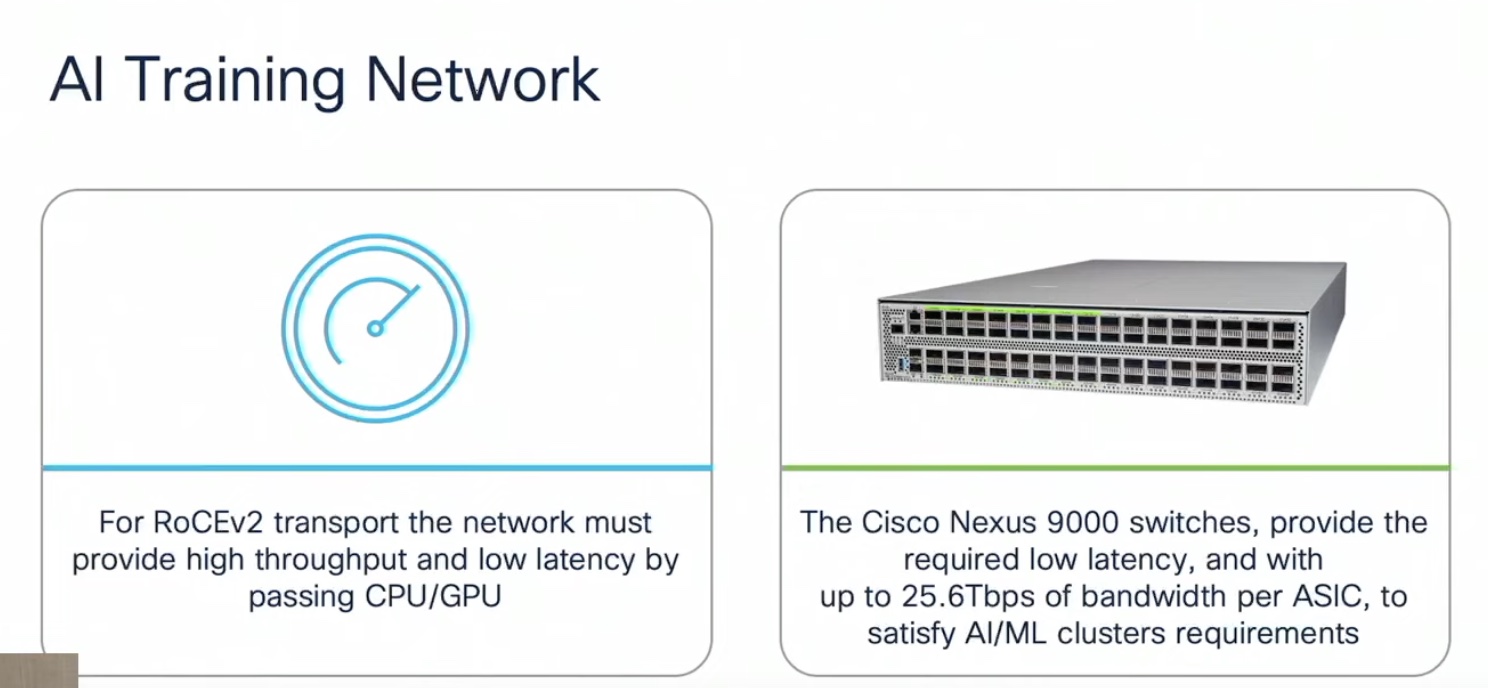I recently attended a great presentation by Pluribus Networks as a guest of Gestalt IT. I wasn’t familiar with this company before the webinar. However, their presenters did a wonderful job of outlining their solution and helping me understand what they’re doing in the networking space. In this blog post, you will see my honest feedback about their product.
It started with the introduction of EVPN, followed by the Pluribus approach to configure, troubleshoot, and monitor overlay datacenter fabrics. The presentation was very technical, and the presenters knew their stuff. They even included a demo about the configuration of their solution.
They mentioned how EVPN today can be configured with two approaches, either fully automated using SDN or a hybrid model with BGP EVPN abstracted with what they call an “SDN object model”. In the hybrid mode, you can reduce the number of configuration lines, thereby reducing configuration complexity. It’s an approach that should appeal to engineers that are used to configuring non-Pluribus switches. It allows for configurations and new services to be rolled out with fewer operational steps and in a more methodical manner.
A fully automated mode using an SDN control plane allows the configuration changes to be sent across the fabric instantly. When you configure one switch the changes are replicated to all the switches connected to the fabric. With fully automated mode, only one SSH session, and three lines of configs, you can configure all switches in the fabric. Pluribus also allows network teams to build an overlay fabric and deploy new services using standard BGP EVPN.
In both cases, Pluribus uses standards based VXLAN and EBGP EVPN to interoperate with third party fabrics to stretch layer 2 and layer 3 services from the Pluribus fabric to a Cisco or Cumulus fabric. In fact, in the demo they showed the Pluribus fabric using the SDN control plane interoperating with a Cisco Nexus fabric running Cisco’s implementation of BGP EVPN.
Digging Deeper into Pluribus
During the webinar, there were many other deep-dive technical discussions, and I asked a couple questions which I would like to briefly discuss in this blog post, for the more technical readers. One of my questions was about BGP Autonomous System Allocation, and they showed that they support EBGP in the EVPN deployment.

As you might know, we have 2-byte ASNs and 4-byte ASNs. With 2-byte ASNs, you can only assign 1023 AS Numbers from the Private ASN space, because other 64k ASNs are in the public ASN range, and you don’t want to assign public ASN even if the purpose is Datacenter Fabric. If that ASN were to leak for some reason the very nature of BGP could cause massive issues upstream and downstream for your neighbors.
My question was how you manage more than 1k ASN allocation if customer has that kind of deployment? The answer was that they support 4-byte ASN allocation too. That’s great to hear and really a required capability anymore for any large-scale DC Fabric deployment.
I asked them another question and it was about Multicast EVPN route type, whether they support it, and the answer was short; it is in the roadmap. The presenter was clearly expecting this, and I am satisfied with their answer again. It is again another required feature for some of the DC Fabrics. More and more networks are starting to rely on multicast EVPNs. If your provider doesn’t support them or doesn’t have plans to do so, as Pluribus indicated on their roadmap, you should consider getting commitment for this critical feature. If you can’t, it might be time to look at a new solution.
Of course, when you talk about EVPN, segmentation is key, and there might be many tenants in the Datacenters, and you need segmentation. So, classical VRFs, RD, RT, all the functions for the EPVN segmentation of course are supported and you are abstracted away from the configuration complexity for these value/numbering assignments.
Key Takeaways
Pluribus not only simplifies the provisioning of overlay network using SDN intelligence with their Adaptive Cloud Fabric and helps monitoring and managing overlays through their GUI-based UNUM management platform. The Pluribus fabric also has built in per-flow telemetry and Pluribus UNUM Insight Analytics provides dashboards to view the data and network operators are able to get some visibility for the underlay network as well. As I have seen, already there are many functions to simplify the operation and deployment of EVPN networks and they have many planned functions ready to include in their operating system.
As they mentioned during the webinar, they have many customers who use Pluribus in their production network, with the roadmap features and the capabilities. I believe we will hear about this company more and more as they begin to be more widely deployed to help companies build a network fabric built on standard protocols.
You should watch both parts of this Showcase. The other panelists there asked great questions about not only about Pluribus, but also EVPN. I learned quite a bit about how they approach the subject, and I know you’ll learn quite a bit too!
They are trying to solve a very specific problem, which is simplifying the provisioning of one of the most complex protocols out there. As I mentioned in this blog post, I personally will be happy to see multicast EVPN added to their product suite. It’s not just about what your product can do right now. It’s about seeing where they are headed and knowing they’re building a complete solution for companies looking to implement EVPN in their network.
I recommend every network engineer, operators, and datacenter folks to have a look at this and start watching them closely. You will want to take advantage of the simple and easy way Pluribus helps you simplify implement configurations and provides solutions to make the operation of your network easier.




